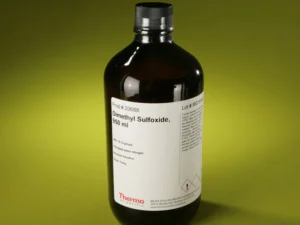Description
Hydroquinone: Understanding its Uses, Risks, and Controversies
Hydroquinone is a chemical compound that has been a prominent ingredient in skincare for decades, primarily known for its skin-lightening properties. However, its use is often debated due to potential side effects and concerns surrounding its safety. This article aims to provide a comprehensive overview of hydroquinone, covering its uses, mechanisms of action, associated risks, and the controversies that surround it.
What is Hydroquinone?
Hydroquinone is an aromatic organic compound with the chemical formula C6H4(OH)2. It’s a white, crystalline solid used in various industries, including photography, rubber manufacturing, and, most notably, skincare. In skincare, it’s primarily used as a depigmenting agent, meaning it helps reduce the appearance of dark spots and uneven skin tone.
How Does Hydroquinone Work?
Hydroquinone works by inhibiting the enzyme tyrosinase. Tyrosinase is crucial in the production of melanin, the pigment responsible for skin color. By blocking tyrosinase, hydroquinone effectively slows down melanin production, leading to a lightening effect in treated areas. This makes it effective in treating various hyperpigmentation conditions, including:
- Melasma: A common skin condition characterized by brown or greyish patches, often on the face.
- Post-inflammatory Hyperpigmentation (PIH): Dark spots that appear after inflammation, such as acne or eczema.
- Sunspots (Solar Lentigines): Dark spots caused by prolonged sun exposure.
- Freckles: Small, brown spots often caused by sun exposure and genetics.
Uses of Hydroquinone:
Hydroquinone is typically available in creams, lotions, and gels, often in concentrations ranging from 2% to 4%. It’s often used in combination with other active ingredients like retinoids, corticosteroids, or alpha-hydroxy acids (AHAs) to enhance its effectiveness and mitigate potential side effects. Dermatologists commonly prescribe hydroquinone for specific skin conditions, and lower concentrations may be found in over-the-counter products.
Risks and Side Effects:
While hydroquinone can be effective, it’s essential to be aware of its potential risks and side effects:
- Skin Irritation: Redness, itching, dryness, and burning sensations are common side effects, especially at higher concentrations.
- Ochronosis: A rare but serious side effect characterized by a blue-black discoloration of the skin. This is more likely to occur with prolonged use of high concentrations.
- Exogenous Ochronosis: Similar to Ochronosis, this can also be caused by other topical applications and could be aggravated by the sun exposure.
- Increased Sensitivity to Sunlight: Hydroquinone can make the skin more susceptible to sun damage. Consistent use of a broad-spectrum sunscreen is crucial while using hydroquinone.
- Hypopigmentation (Halo Effect): Excessive use can lead to lightening of the skin surrounding the treated area, creating a noticeable halo effect.
- Contact Dermatitis: Some individuals may develop an allergic reaction to hydroquinone, resulting in a rash.
Controversies and Regulations:
Hydroquinone’s use has been a subject of debate and regulatory scrutiny in various countries.
- Banned in Some Countries: Due to safety concerns, hydroquinone is banned or restricted in several countries, including the European Union, Japan, and Australia. The concerns primarily revolve around the potential for ochronosis and the possibility of a link to cancer, although this link remains inconclusive.
- US Regulations: In the United States, hydroquinone is available both over-the-counter and by prescription. However, the FDA has proposed banning over-the-counter hydroquinone in the past, citing safety concerns. The status of these regulations can change, so it’s important to stay informed.
- Misuse and Illegal Products: The desire for lighter skin has led to the misuse of hydroquinone in some regions, with unregulated and potentially dangerous products containing high concentrations or other harmful ingredients being sold.
Alternatives to Hydroquinone:
Given the potential risks associated with hydroquinone, many individuals seek alternative skin-lightening ingredients. Some popular alternatives include:
- Vitamin C: A potent antioxidant that can help brighten the skin and reduce hyperpigmentation.
- Niacinamide: A form of vitamin B3 that can help improve skin tone and reduce inflammation.
- Kojic Acid: A natural ingredient derived from fungi that inhibits melanin production.
- Azelaic Acid: An acid that can help reduce inflammation and hyperpigmentation.
- Retinoids: Vitamin A derivatives that promote cell turnover and can lighten dark spots.
- Arbutin: A natural derivative of hydroquinone that is considered safer and gentler.
Conclusion:
Hydroquinone remains a popular and effective treatment for hyperpigmentation. However, it’s crucial to use it responsibly and under the guidance of a dermatologist. Understanding the potential risks and side effects is essential to making informed decisions about your skincare routine. If you’re considering using hydroquinone, consult with a dermatologist to determine if it’s the right option for you and to discuss proper usage and potential alternatives. Always prioritize sun protection and be aware of the regulations and potential dangers associated with unregulated products. Ultimately, the decision to use hydroquinone should be based on a careful evaluation of its benefits and risks, taking into account your individual skin health and concerns.















Reviews
There are no reviews yet.